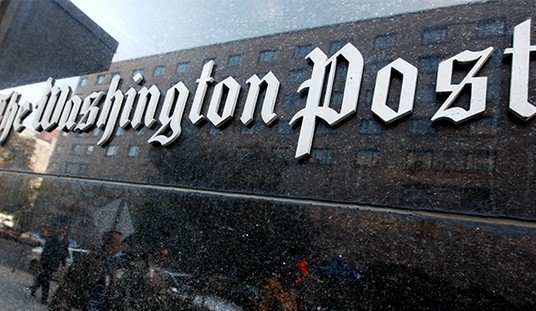The big drawdown of Coalition forces in Afghanistan is beginning. “Sometime in the next few weeks, local workers will rip out the fancy cooking equipment in the gleaming, $20 million armored dining hall on the German-run military base at Kunduz, Afghanistan, and replace it with crude wood-burning stoves built on what is now a loading dock.”
Coalition troops at the German base and an adjacent U.S. camp are packing up and shipping out equipment, trying to decide what to destroy, what to sell and what to give to the local Afghan security forces, trying to orchestrate a safe, orderly final withdrawal even as they dodge the occasional incoming rocket and respond to intelligence reports of bombs along the roads they’re using to truck equipment and people out.
Normally the equipment and unused supplies would go out by road and rail to ports for return to base. But as the Washington Post points out most of it now has to be flown out by air. “As it intensifies its withdrawal from Afghanistan, the U.S. military is being forced to fly massive amounts of gear and equipment out of the country instead of using cheaper overland and sea routes, according to Pentagon officials.”
Military logisticians would like to send home 60 percent of their equipment and vehicles by trucking them into Pakistan and then loading them onto ships — the least expensive method by far. But cargo is flowing out on that route at only one-third the planned rate, the officials said.
As most Belmont Club readers know, all the land routes in or out of Afghanistan go through Pakistan, Iran or Russia. There have been difficulties arranging passage out. These countries want to be paid an exit fee to allow a US evacuation and the price has been high.
Officials declined to elaborate on the reasons for their heavy reliance on the more expensive methods of transport. They said, however, that Deputy Defense Secretary Ashton B. Carter and other Pentagon officials are scheduled to arrive Friday in Kabul to meet with senior Afghan officials on the issue. …
The government of Afghanistan closed the border this summer after a dispute over whether the Pentagon and its contractors should have to pay $70 million in customs “fines” for taking the military gear out of the country. The Pentagon has refused to pay, calling the penalties a thinly veiled attempt at a shakedown. …
The U.S. military withdrawal from Afghanistan poses an enormous logistical challenge. The landlocked country is halfway around the world, has few rail lines and poor roads, and is ringed by mountainous terrain. By the end of next year, U.S. officials say, they need to pull out 24,000 vehicles and 20,000 shipping containers, one way or another. …
The primary alternative is to load the equipment on cargo planes and fly it out — either all the way back to the United States, or to seaports in the Persian Gulf and the Arabian Sea. But those options are three to seven times as expensive as the route through Pakistan.
Another alternative is to ship cargo by rail or truck across Afghanistan’s northern borders into Central Asia and Russia. But the Defense Department, after working for years to secure transit agreements with those countries, expects to move only 1 or 2 percent of its equipment along those corridors, according to a senior defense official who spoke on the condition of anonymity under ground rules set by the Pentagon.
Obama chose to move large land forces into Afghanistan despite the fact that it is landlocked and the only routes in or out snaked through enemy country. Maybe he was counting on charming his way out. Well it is isn’t working. He’ll have to buy his way out.
So anything that can’t be bribed or flown out will have to be destroyed or given away. A waste? A mistake? Obama doesn’t make any mistakes, as Kevin Drum reminds us. “Obama didn’t plan on Syrian inspections. He did something better … the mark of a good commander is recognizing that and figuring out to react. It may not be pretty to watch it unfold in public in real time, but it’s nonetheless the mark of a confident and effective commander-in-chief. It’s about time we had one.” Already the White House reminds us, “Russian prestige on the line in Syria”. Whatever you say. Whatever you say.
Maybe the White House should forget about Syria for a while and remember Hungnam.
Generally described as an “amphibious operation in reverse”, the evacuation of Hungnam encompassed the safe withdrawal of the bulk of UN forces in eastern North Korea. It was the largest sealift since the 1945 Okinawa operation. In barely two weeks, over a hundred-thousand military personnel, 17,500 vehicles and 350,000 measurement tons of cargo were pulled out. In comparison with the retreat in central and western Korea, little was left behind. Even broken-down vehicles were loaded and lifted out. Also departing North Korea through Hungnam were some 91,000 refugees, a large number, but not nearly as many as had gathered to leave.
What they couldn’t take out in 1950 they blew up. But in this politically correct era, the President can just make a gift of what he can’t afford to fly out — to the Taliban, why not, he’s giving arms to al-Qaeda in Syria (as described in Dining with Al Qaeda, an American lady reporter’s charming meal with Jihadis) — and fly the last men out, assuming the airfield remains in US hands to the last.
Did you know that you can purchase some of these books and pamphlets by Richard Fernandez and share them with you friends? They will receive a link in their email and it will automatically give them access to a Kindle reader on their smartphone, computer or even as a web-readable document.
The War of the Words for $3.99, Understanding the crisis of the early 21st century in terms of information corruption in the financial, security and political spheres
Rebranding Christianity for $3.99, or why the truth shall make you free
The Three Conjectures at Amazon Kindle for $1.99, reflections on terrorism and the nuclear age
Storming the Castle at Amazon Kindle for $3.99, why government should get small
No Way In at Amazon Kindle $8.95, print $9.99. Fiction. A flight into peril, flashbacks to underground action.
Storm Over the South China Sea $0.99, how China is restarting history in the Pacific
Tip Jar or Subscribe or Unsubscribe










Join the conversation as a VIP Member